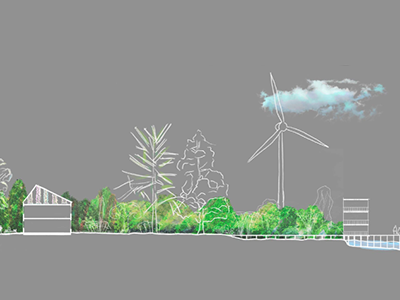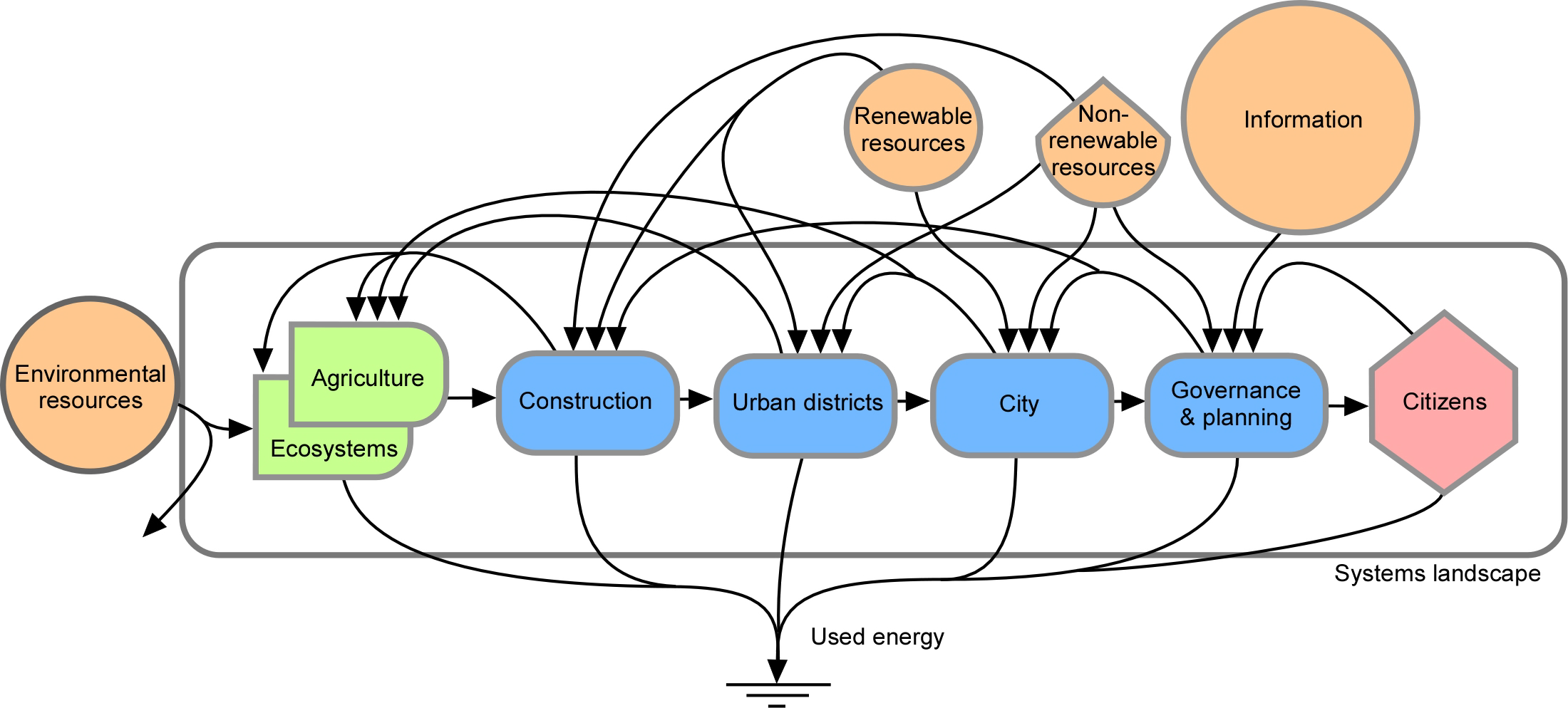Introduction and purpose
The purpose of this project was to critically analyze if formal sustainability ambitions in urban districts result in quantifiable progression towards overall resource efficiency. This was investigated by emphasizing resource use and potential improvements derived from technical/architectural solutions, i.e., the built environment, human
behavioral change, i.e., ‘sustainable’ lifestyles, and the correlation between these oftentimes separated foci.
Materials and methods
As one of the first urban districts in Sweden to be certified sustainable by Sweden Green Building C ouncil (SGBC ), the housing area Rosendal in Uppsala, Sweden, was selected for an interdisciplinary case study, focusing three interrelated themes:
- Visions and ambitions of planners;
- Residents´ perceptions and everyday practices;
- Biophysical resource use associated with the built environment and the residents’ lifestyles.
- Methods included semi-structured interviews with planners, architects and builders; qualitative interviews and mapping exercises with residents, and emergy synthesis of resource support to the built environment and residents´ lifestyles.
Results
From a planning perspective, the results show that Uppsala municipality, representing the formal planning system, did not present sustainability criteria in their plans of Rosendal. Neither were sustainability aspects – planning results - evaluated or followed up. The construction company of the building in focus for this study, had not defined what urban sustainable development means in their work; rather basing their work on experiences and intuition in developing individual buildings, and hence missing the context and interaction with the rest of the Rosendal district, Uppsala and larger scales. Another part of the study concerns what happens to people when they move to a certified sustainable
district: would people change to more sustainable everyday practices? In general, we found that people changed their everyday transport practices. For many, the move entailed being closer to their place of work or study, reducing their commute. They sometimes also changed mode of transport, from car to bike/bus/foot. While everyday transport practices thus changed for many, there were no changes in recreational transport (holidays).
Another practice specifically focused were living practices and their energy use. Moving, for many also meant changing household composition; from multimember households to single households. The building we focused on had relatively many single household apartments, standard equipped with private dishwasher, washing machine, dryer, and the new inhabitants all furnished their apartment with private televisions and other equipment. This means that the resource use per person went up for those who were previously living with others. Related to the change in household composition, the move also entailed for a large part a change to cooking for 1 person, instead of sharing meals. These changes have little to do with the sustainability ambitions of the district itself, but more with the location and household composition. Our findings thus suggest that the sustainability ambitions in general did not translate directly into more sustainable lifestyles.
The emergy synthesis detailed the top contributors to urban life in Rosendal, and revealed that both the lifestyle and built environment are highly unsustainable, ranking poorly in terms of the performance indices calculated, and, when considered from a global perspective, overshooting resource consumption by more than 70 times. The top 5 input sub-categories, in descending order, were:
- Long distance travel;
- Hygiene products;
- Automobile, commute;
- Meat consumption, and
- Sporting goods and tools.
Whereas the relative difference between these categories is only marginal, their overall importance from a systems perspective is both significant and very high, i.e. representing the primary drivers of total resource use of urban life in this case study. As such, they merit further scrutiny when considering potential planning and policy measures to achieve urban sustainability from a broad systems perspective.
Discussion and conclusions
Sustainable and space-efficient living with access to social meeting places was the key messaging in the developers´ marketing to the public. However, while planners and builders focus on trendy, high-tech, efficiencyoriented solutions primarily related to the built environment, the results from this study indicate that such approaches barely scratch the surface into improving the sustainability of urban living. Unless proposed solutions make a greater effort to facilitate contributions from renewable sources, as the emergy synthesis in this study proposes, the contribution to sustainable urbanization will be negligible. Other central conclusions include that more substantial efficiency gains can be achieved for example by exploring alternative construction materials, recycling materials to a larger extent, extending the lifetime of buildings, creating more efficient floor plans, and by finding new ways to share material resources and physical living space, i.e. design interventions that reduce total material use on a per capita basis.
From a broader global perspective, the study also generated interesting ethical questions related to how “sustainable” urban development plays out in practice. For example, for urban life as in Rosendal to be sustainable, society can choose between two fundamentally different development trajectories: 1) reduce global population to make room for the lifestyle currently enjoyed by a minority, i.e., prioritizing the Rosendal lifestyles; or 2) reduce the resource support to urban life by a factor of 77.29 to enable a sustainable and fair share for the current population of 7.44 billion.
This study hence signals to delicate yet important ethical considerations regarding a person’s ability to consume more than their fair share of resources depending on their lifestyle, where or how they live. More studies are required to determine how this type of “green” urban development performs in comparison to conventional housing, and other urban districts developed in the past, present, and future. However, the conclusions from this study indicate a major challenge for urban planning to achieve sustainable development. The fact that the urban district studied in this project is one of only a few that are certified, and thus officially recognized as sustainable, further underscores the gravity of this challenge.
Scientific publications
Bergguist, D., Garcia-Caro, D., Joosse, S., Granvik, M. and Peniche, F. (2020). The Sustainability of Living in a “Green” Urban District: An Emergy Perspective. Sustainability, 12(14): 5661. https://doi.org/10.3390/su12145661
Bergquist, D. and Hedfors, P. (2018). Design C riteria for Regenerative Systems Landscapes. Nordic Journal of Architectural Research, 30 (3), pp. 107-134.
Granvik, M., Bergquist, D. and Joosse, S. (Forthcoming). Planners´ and construction companies´ perspectives on sustainability in developing Rosendal, Sweden. The International Journal of Urban Policy and Planning.
Joosse, S., and Marshall, M. (2020). Fridge stories and other tales from the kitchen: A methodological toolbox for getting closer to everyday food practices. Food, Culture & Society, pp. 1-19.
Joosse, S., Schallhart, T., Bäckman, M., Bergquist, D. and Granvik, M. (Forthcoming). Building (for) sustainable lifestyles. Exploring the effect of a house in a certified sustainable urban district on everyday household practices,
in Uppsala, Sweden. To be submitted to Environment and Planning D.
Maassen, J., Rydberg, T. and Bergquist, D. (2020). The Environmental Support to Food Preparation and Diets in a “Green” Urban District. Journal of Environmental Accounting and Management, 8(1), pp. 54-70.


